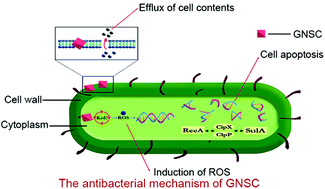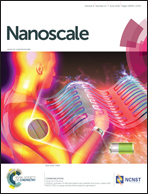Antibacterial properties and mechanisms of gold–silver nanocages
Abstract
Despite the number of antibiotics used in routine clinical practice, bacterial infections continue to be one of the most important challenges faced in humans. The main concerns arise from the continuing emergence of antibiotic-resistant bacteria and the difficulties faced with the pharmaceutical development of new antibiotics. Thus, advancements in the avenue of novel antibacterial agents are essential. In this study, gold (Au) was combined with silver (Ag), a well-known antibacterial material, to form silver nanoparticles producing a gold–silver alloy structure with hollow interiors and porous walls (gold–silver nanocage). This novel material was promising in antibacterial applications due to its better biocompatibility than Ag nanoparticles, potential in photothermal effects and drug delivery ability. The gold–silver nanocage was then tested for its antibacterial properties and the mechanism involved leading to its antibacterial properties. This study confirms that this novel gold–silver nanocage has broad-spectrum antibacterial properties exerting its effects through the destruction of the cell membrane, production of reactive oxygen species (ROS) and induction of cell apoptosis. Therefore, we introduce a novel gold–silver nanocage that serves as a potential nanocarrier for the future delivery of antibiotics.


 Please wait while we load your content...
Please wait while we load your content...